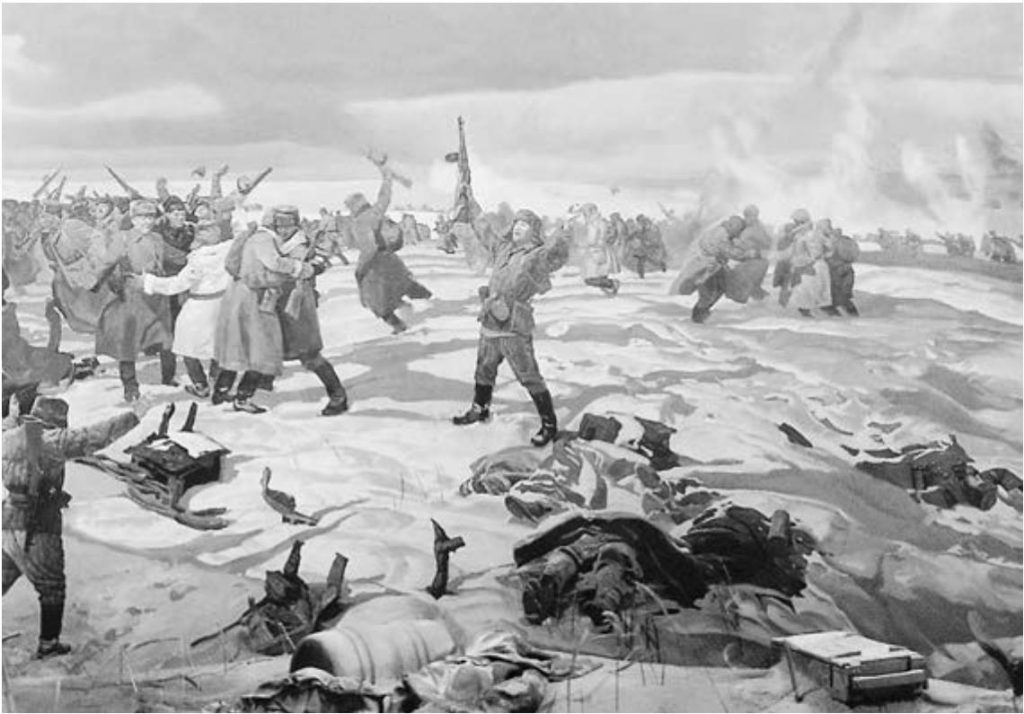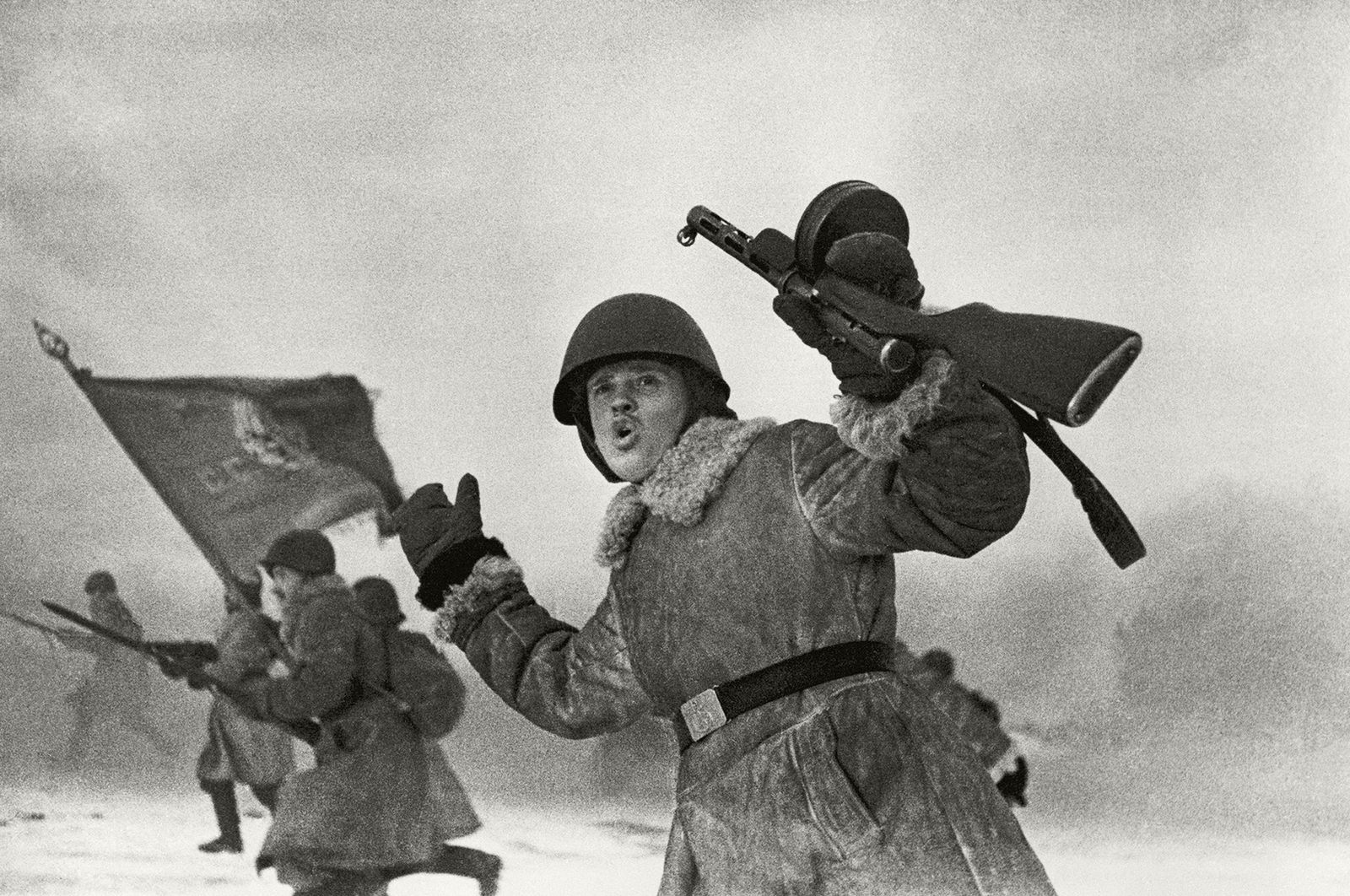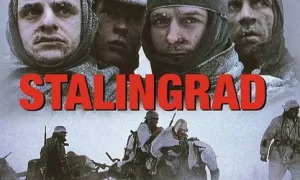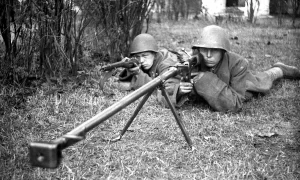Operation Uranus – Military situation before the operation

Stalingrad strategic offensive operation, codenamed Operation Uran (November 19, 1942 – February 2, 1943) – a counteroffensive during the Great Patriotic War in order to surround and destroy the enemy forces troops in the city of Stalingrad… The coordination of the three fronts was carried out by the Chief of the General Staff A.M. Vasilevsky.
By the end of the defensive period of the Battle of Stalingrad, the 62nd Army held the area north of the Tractor Plant, the Lyudnikov Island bridgehead east of the Barrikady plant, part of the Krasny Oktyabr plant and the northeastern quarters of the city center, the 64th Army held the entire southern part of the city to a height “Bald Mountain” and defended the approaches to the city from the south and southwest. The general offensive of the German troops was stopped. On November 10, 1942, they went over to the defensive on the entire southern wing of the Soviet-German front, with the exception of sections in the areas of Stalingrad, Nalchik and Tuapse. The position of the German troops became more complicated. The front of Army Groups A and B was stretched over 2,300 km. The flanks of the strike forces were not properly covered. The German command believed that after months of heavy fighting, the Red Army was not able to carry out a major offensive. For the winter of 1942-1943, the German command planned to hold on to the occupied lines until the spring of 1943, and then go on the offensive again.
The alignment of forces in Operation Uranus
The USSR
- Southwestern Front (commander – Lieutenant General, from December 7, 1942 – Colonel General, from February 13, 1943 – Army General N.F. Vatutin ). It consisted of five armies:
21st Army (Lieutenant General I.M. Chistyakov );
5th Tank Army (Major General P. L. Romanenko );
1st Guards Army (Lieutenant General D. D. Lelyushenko );
17th Air Army (Major General of Aviation, since December 1942 – Lieutenant General of Aviation S. A. Krasovsky );
2nd Air Army (Colonel, since October 1942 – Major General of Aviation KN Smirnov).
- Don Front (commander – Lieutenant General, since January 1943 – Colonel General K. K. Rokossovsky ). It consisted of four armies:
65th Army (Lieutenant General P.I.Batov );
24th Army (Major General, since January 1943 – Lieutenant General I.V. Galanin );
66th Army (Lieutenant General A.S. Zhadov );
16th Air Army (Major General S. I. Rudenko ).
- Stalingrad Front (commander – Colonel General A.I. Eremenko ). It consisted of five armies:
62nd Army (Lieutenant General V.I. Chuikov );
64th Army (Major General, since December 1942 – Lieutenant General M.S.Shumilov );
57th Army (Major General, since January 1943 – Lieutenant General F.I.Tolbukhin );
51st Army (Major General N.I. Trufanov ) and
8th Air Army (Major General, since March 1943 – Lieutenant General of Aviation T. T. Khryukin ).
Axis countries
- Army Group “B” (commander – M. Weichs ). The group consisted of:
6th Army – Commander General of the Panzer Forces Friedrich Paulus ;
2nd Army – Commander General of Infantry Hans von Salmut ;
4th Panzer Army – Commander Colonel-General Hermann Goth ;
8th Italian Army – Commander General of the Army Italo Gariboldi ;
2nd Hungarian Army – Commander Colonel General Gustav Jani ;
3rd Romanian Army – Commander Colonel General Petre Dumitrescu ;
4th Romanian Army – Commander Colonel General Constantin Constantinescu.
- 4th Air Fleet – Commander Colonel General Wolfram von Richthofen.
- Army Group Don (commander – E. Manstein ). It consisted of the 6th Army, the 3rd Romanian Army, the Goth Army Group, and the Hollidt Task Force.
The balance of forces on the fronts
Before the start of the operation, the ratio of manpower, tanks, aviation and auxiliary forces in this sector of the theater of operations was as follows:
| Red army | Wehrmacht and allies | Ratio | |
| Personnel | 1,103,000 | 1,011,000 | 1.1: 1 |
| Guns and mortars | 15501 | 10290 | 1.5: 1 |
| Tanks | 1463 | 675 | 2.2: 1 |
| Aircraft (combat) | 1350 | 1216 | 1.1: 1 |
Preparation

The fundamental decision to start the preparation of the offensive operation was made on September 13, 1942, at a meeting with I. V. Stalin G. K. Zhukov and A. M. Vasilevsky. The Headquarters of the Supreme Command and the General Staff from September 1942 began to develop a plan for a counteroffensive. The author of the idea for the operation was Colonel of the Main Operations Directorate of the General Staff M.M. Potapov. On November 13, the plan for a strategic counteroffensive, code-named Uranus, was approved by the Headquarters under the chairmanship of JV Stalin. The plan was as follows: the Southwestern Front with the task of delivering deep strikes from bridgeheads on the right bank of the Don from the Serafimovich and Kletskaya areas (the depth of the offensive is about 120 km); shock group of the Stalingrad front (64th, 57th, 51st and 8th Air Armies) advanced from the Sarpinskie Lakes region to a depth of 100 km. The strike groups of both fronts were to meet in the Kalach-Sovetsky area and encircle the main enemy forces at Stalingrad. At the same time, part of the forces of the same fronts ensured the creation of an external front of encirclement. The Don Front, consisting of the 65th, 24th, 66th and 16th air armies, delivered two auxiliary strikes – one from the Kletskaya area to the southeast, and the other from the Kachalinskaya area along the left bank of the Don to the south. The plan provided for: directing the main strikes against the most vulnerable sectors of the enemy’s defense, to the flank and rear of his most combat-ready formations; strike groupings to use terrain favorable to the attackers; with a relatively equal balance of forces in the breakthrough areas, by weakening the secondary areas, create a 2.8 – 3.2-fold superiority in forces. Due to the deepest secrecy of the development of the plan and the achieved enormous secrecy of the concentration of forces, the strategic surprise of the offensive was ensured.
Fresh forces were sent to the fronts involved in the operation in the strictest secrecy: 5th Tank Army, 10 rifle divisions, 6 rifle brigades, 3 tank corps, 1 mechanized corps, 2 cavalry corps, 17 separate tank brigades and regiments, 75 artillery and mortar regiments, as well as significant forces of human replenishment and military equipment in already operating units. At the same time, large-scale regrouping of troops was carried out.
Volsky’s letter
One of the central places in the offensive was assigned to the 4th mechanized corps. On November 17, two days before the start of the offensive, the corps commander, General V.T. Volsky sent a letter to Stalin over the head of his direct command, in which he expressed doubts about the success of the operation and advised to postpone it or even cancel it. The scandalous act had no consequences for Volsky: he was left in office and took part in a counteroffensive.
Operation progress

Soviet soldiers in an offensive near Stalingrad. 1943. The Great Patriotic War (1941-1945)., Image: 91768291, License: Rights-managed, Restrictions: Mandatory credit, Model Release: no, Credit line: Profimedia, Sputnik
The beginning of the offensive
The offensive of the troops of the Southwestern and Right Wing of the Don Fronts began on the morning of November 19 after a powerful artillery barrage. Troops of the 5th Tank Army broke through the defenses of the 3rd Romanian Army. German units were located behind the Romanian troops, tried to stop the Soviet troops with a strong counter-attack, but did not succeed. On November 20, the strike group of the Stalingrad Front went over to the offensive. On the morning of November 23, the advance units of the 26th Tanks Corp captured Kalach. November 23 troopsThe 4th Tanks Corps ( A.G. Kravchenko ) of the Southwestern Front and the 4th Mechanized Corps ( V.T.Volsky ) of the Stalingrad Front met in the area of the Sovetsky farm, closing the encirclement of the enemy’s Stalingrad grouping between the Volga and Don rivers. The 6th and the main forces of the 4th Panzer Armies – 22 divisions and 160 separate units with a total strength of 330 thousand people were surrounded. By the same time, a large part of the outer front of the encirclement had been created, the distance of which from the inner one was 40-100 km.
The length of the front of the 6th German Army was reduced by November 25 to two hundred kilometers. At the same time, 284 thousand people got into the “cauldron”, including: the headquarters of the 6th army; XIV Panzer and IV, VIII, XI, LI Army Corps (as well as XLVIII Panzer and IV Army Corps, which were part of the 4th Panzer Army and are now subordinate to Paulus); 14th, 16th and 24th Panzer Divisions; 3rd, 29th and 60th Motorized Divisions; 44, 71, 76, 79, 94, 100, 113, 295, 297, 305, 371, 376, 384 and 389th Infantry Divisions; 20th Romanian Infantry and 1st Romanian Cavalry Division (12.6 thousand people); 243rd and 245th assault gun battalions; 2nd and 51st rocket launcher regiments; 91st Air Defense Regiment and more than one hundred and fifty artillery units, engineer and construction battalions, military police battalions, etc.
On November 24, the troops of the Southwestern Front, defeating the Romanian troops surrounded in the Raspopinsky area, took 30 thousand prisoners and a lot of equipment. On November 24-30, the troops of the Stalingrad and Don fronts, waging fierce battles with the encircled enemy troops, halved their area, squeezing 70-80 km from west to east and 30-40 km from north to south on the territory.
Axis reaction

On the night of November 23-24, after negotiations between the Chief of Staff of Army Group “B” Georg von Sodenstern and Chief of General Staff Zeitzler, it was decided to immediately begin the withdrawal of troops from Stalingrad. Hitler agreed with this decision. However, on the morning of November 24, Paulus received a radiogram from Hitler with an order to remain in Stalingrad. This change occurred under the influence of Goering, persuaded Hitler in the ability of the Luftwaffe to supply the encircled grouping by air.
At the end of November, German troops operating against the external front of the encirclement were united in the Don Army Group (commanded by Field Marshal E. Manstein), which also included the encircled group.
Development of events

In the first half of December, actions to eliminate the encircled grouping developed slowly, since, due to the reduction of the front in the cauldron, the enemy consolidated his battle formations and organized defense in equipped positions occupied by the Red Army in the summer of 1942.
A significant (more than threefold) underestimation of the number of encircled German troops played a significant role in slowing down the offensive. In the areas of Kotelnikovsky and Tormosin, the Wehrmacht created two shock groups. On December 12, the strike group “Goth”, according to Soviet data, had nine infantry and four tank divisions, 125 thousand people, 650 tanks, which, however, is not confirmed by German sources, went on the offensive from Kotelnikovsky along the railway to Stalingrad, without waiting for the concentration of the Tormosinsk group to release the encircled troops. Using, according to the Soviet version, not confirmed by German sources, a significant superiority in forces over the 51st Army, the enemy pushed it back beyond the river. Aksai, where on December 15, his offensive was stopped. On December 19, the enemy resumed the offensive, but was stopped by the troops of the 2nd Guards and 51st armies on the river. Myshkov, 40 km from the encircled troops. On December 16, the troops of the Southwestern Front launched an offensive against Morozovsk and Kantemirovka to defeat the enemy in the Middle Don area and enter the rear of the Tormosinsk group. During three days of fierce fighting, the enemy’s defenses were broken in five directions. By December 31, the Italian 8th Army and the German task force Hollidt were completely defeated. The 2nd Guards Army, during the counteroffensive on December 24-31, inflicted a complete defeat on the Goth group, which suffered heavy losses (including 5200 prisoners), and threw it back to Zimovniki, pushing back the outer front of the encirclement by 200-250 km. The 57th, 64th and 62nd armies of the Stalingrad Front were transferred to the Don Front to eliminate the encircled troops. The Stalingrad Front on January 1, 1943 was renamed into the South and received the task of advancing in the Rostov direction. By early January, the situation of the encircled troops worsened. The space occupied by them was shot through by artillery, material reserves were depleted.
Elimination of German resistance

On January 9, 1943, the Soviet command presented the command of the surrounded German troops with an ultimatum to surrender, but by Hitler’s order it was rejected. On January 10, the liquidation of the “Stalingrad Cauldron” by the forces of the Don Front began (Operation Ring). At this time, the number of encircled troops was still about 250 thousand people, the number of troops of the Don Front – 212 thousand people. The enemy stubbornly resisted, but the Soviet troops moved forward and on January 26 cut the grouping into two parts – the southern one, in the center of the city, and the northern one, in the area of the tractor plant and the Barricades plant. On January 31, the southern group was eliminated, its remnants, led by Paulus, surrendered. On February 2, the northern group was finished. This ended the Battle of Stalingrad.
Results of the operation
During the Stalingrad offensive operation, two German armies were destroyed, two Romanian and one Italian armies were defeated. 32 divisions and three brigades were destroyed, 16 divisions were defeated. The troops of the Axis countries lost more than eight hundred thousand people, the losses of the Soviet troops amounted to 485 thousand people, including the irrecoverable ones – 155 thousand people. The conditions for an outstanding operation were created by Soviet troops during the Stalingrad defensive operation, starting in September 1942.
The encircled group, which did not attempt to break through the internal encirclement front, was completely destroyed, right down to the last unit. A significant number of the wounded (from F. Paulus’s diary – 42 thousand) were evacuated from the “couldron” by air, but Paulus does not say how many wounded managed to reach the “mainland”.
“The following units were surrounded at Stalingrad:
- headquarters and all command of the 6th Army,
- headquarters of five corps (4, 8, 11, 51st army and 14th tank),
- thirteen infantry divisions (44, 71, 76, 79, 94, 100th Jaeger, 113, 295, 305, 371, 376, 389 and 397th),
- three tank divisions (14th, 16th, 24th),
- three motorized divisions (3rd, 29th, 60th),
- one air defense division (9th).
Total: 20 German divisions.
In addition, the remnants of two Romanian divisions (1st cavalry and 20th infantry) with a Croat regiment, rear units and divisions of the Todt organization were surrounded.
According to the service of the Quartermaster General, on November 24, 1942, 270 thousand people were surrounded. ”

Additional information
Only during the operation “Ring” according to Soviet data 10.01. – 02.02.1943 91,545 were taken prisoner and over 140 thousand (up to 147,200) enemy soldiers and officers were destroyed. According to various sources, from 30 to 42 thousand wounded were taken out of the “couldron” by air. Only by prisoners before the start of Operation Ring, the enemy lost 16.8 thousand people.
The Soviet command estimated the size of the grouping, which was to be surrounded in the final version of Operation Uranus, at 80-90 thousand. The original version had a more modest scale. However, such an underestimation did not have a significant effect on the rapid encirclement, which took place within four to five days (instead of the calculated three), but greatly slowed down the elimination of the encircled troops. Such a gross underestimation with a brilliant end result is not the only one in military history; the battle of Novi ( Italian campaign of Suvorov, 1799). The huge “cauldron” chained to itself for a long time all the forces and attention of the enemy and sharply limited the possible options for his actions on the entire southern wing, which allowed the Soviet command to brilliantly develop the success of the encirclement and inflict huge new losses on the enemy.












